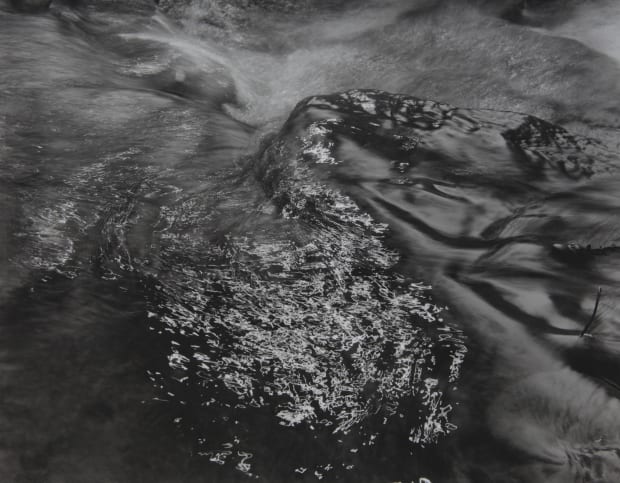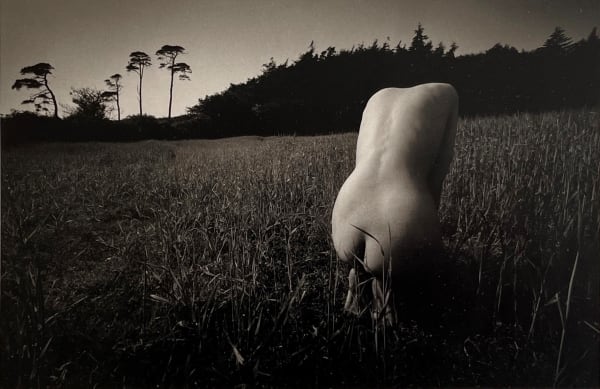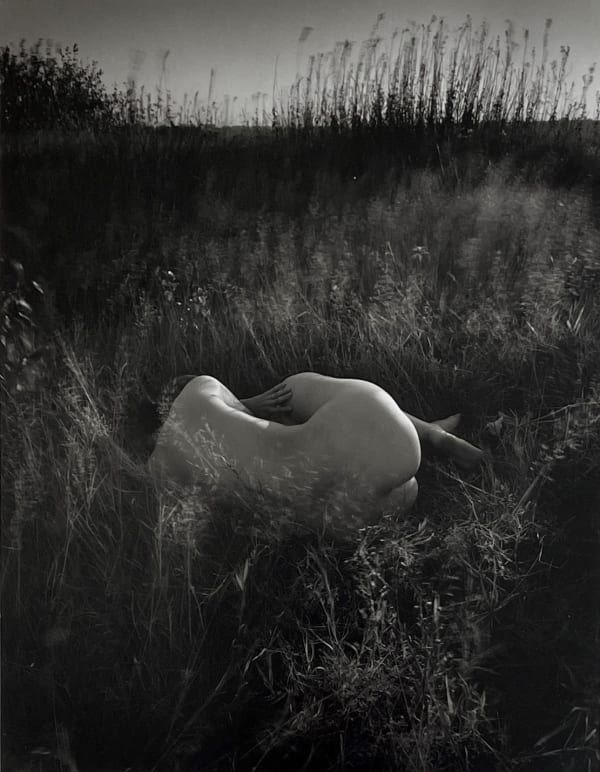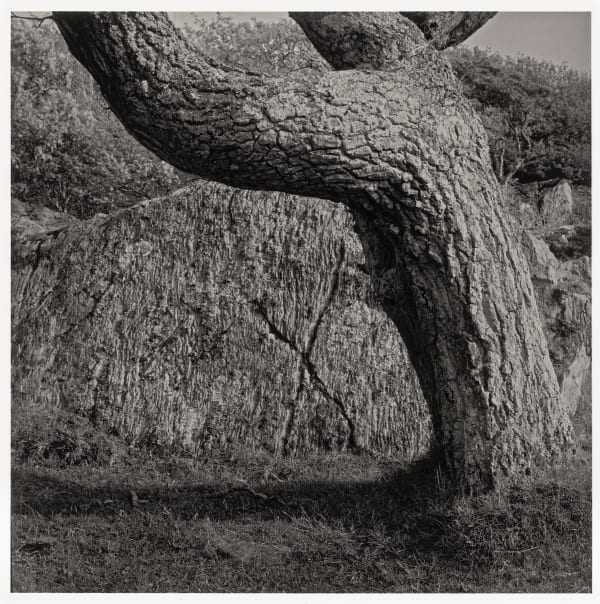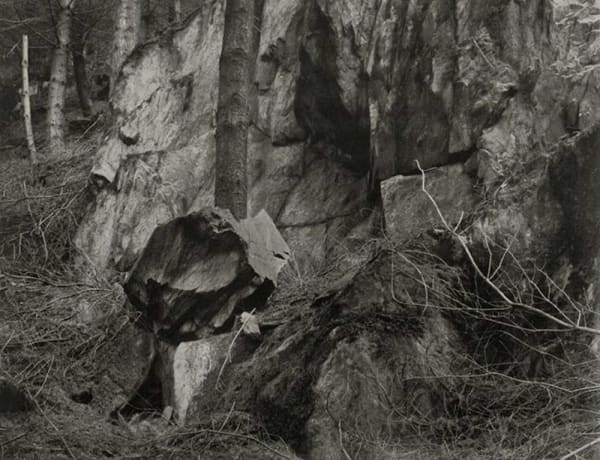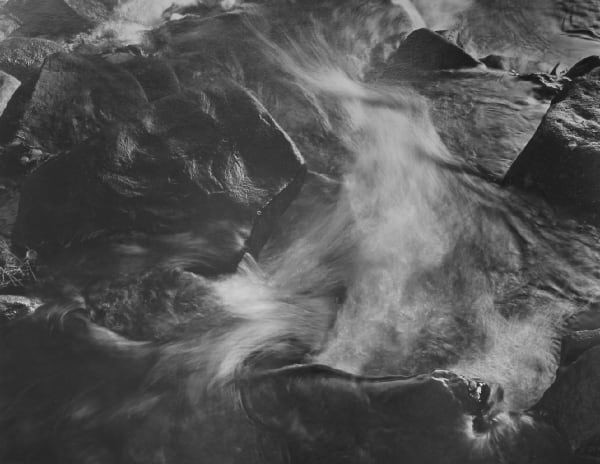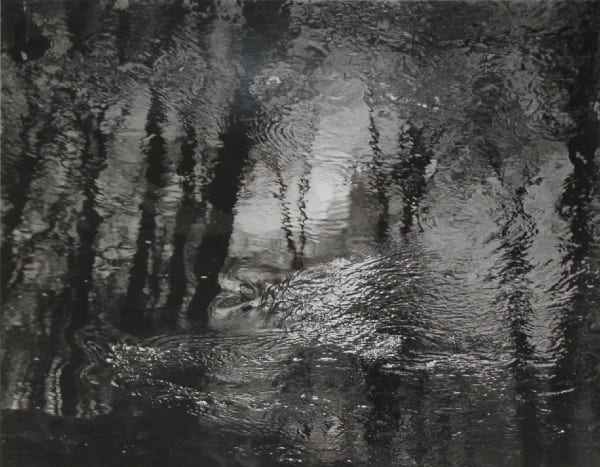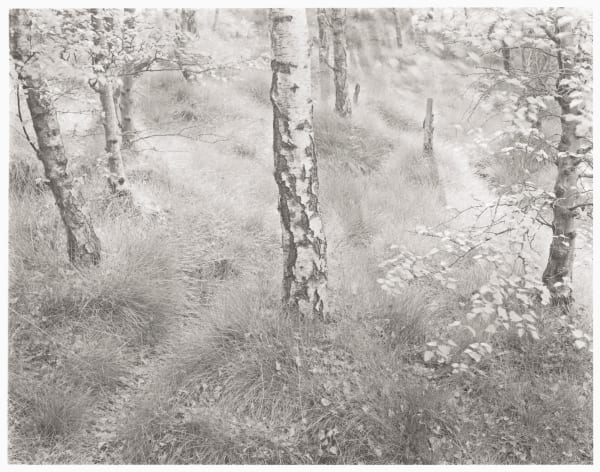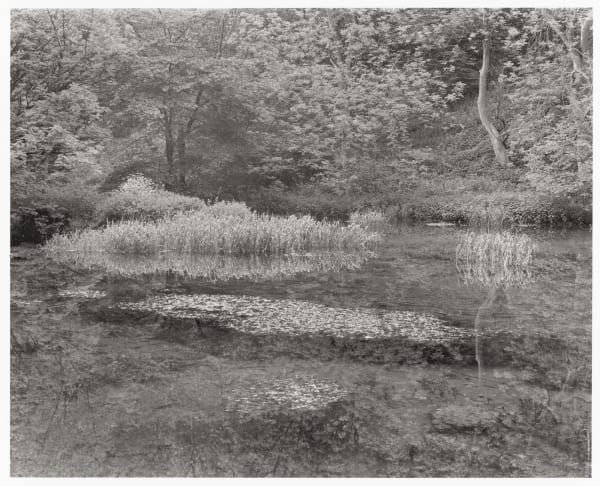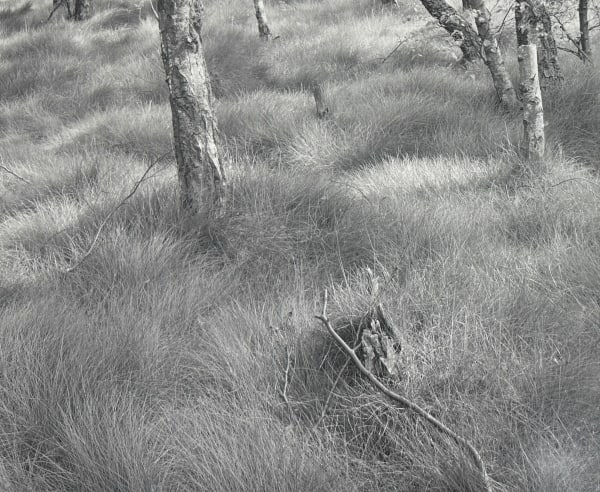Early Landscape.
Text by John Blakemore
In 1970 I moved to Derby to teach full time on the then Diploma in Creative Photography (later BA(Hons) Photography). My personal practice had stagnated and I had little idea of the photographs I might next make. Returning from a gallery visit in London a student and I were talking about the 'creative block'. He invited me to join a group of three students who were planning an exhibition. I agreed and was at once haunted by the blank wall I would be expected to fill.
My last significant experience had been a winter spent in north Wales in 1968. The landscape was like none I had previously known. I did not photograph but walked and experienced the landscape.
In a notebook I wrote:
'A land of paradox, harsh, lunar landscapes, running with gurgling water and supporting everywhere a riotous life. From the very rocks trees thrust upwards, life at it's most tenacious, gripping convulsively at the unyielding rock, raising twisted arms to the unrelenting wind.Limbs green with parasitic growth of moss and lichen, which weld tree and rock into one entity. Trees grey and armoured as the rock itself, wood metamorphosed into rock by the struggle for survival, and overall a sky as subtle and ever-changing as the landscape itself.'
So it was to Wales that I returned to photograph to produce the exhibition.
All of my cameras then were 35mm, Pentax, a collection of lenses, not I decided suitable for working in the landscape. I was at that time sharing a flat with a Japanese student, he owned a Bronco, I borrowed it and headed for Wales. I had never expected to photograph in the landscape, for me personally it had never seemed an area of serious photographic endeavour. However, I made the six images necessary for the exhibition ( I no longer have any prints from this period). A new fascination had begun and I worked intensively in the landscape for the next eleven years, in Wales and Derbyshire.
This sounds, I realise, a very superficial beginning, but it was also for me a return to the preoccupations of my childhood and youth. Most of my time then was spent exploring the local countryside. I was a keen ornithologist and on leaving school had worked on farms for two years prior to National Service and my discovery of photography. My rediscovery of the fascination of the landscape represented a return to previous preoccupations that had been lost to me.
The first landscape collection includes 'Wounds of Trees', my first conscious sequence and related images that clarified my ideas of how I wanted to work in the landscape. I had no interest in wide landscape. I was intrigued by the details which implied the processes of the landscape, the effects of weather and environment. Light, plant growth, water, wind, areas for a prolonged exploration of the interaction of subject and medium. My work in the landscape was based upon a ritual of intimacy, the intense exploration of small areas of the landscape, an are of woodland, a length of river, a confined stretch of beach. Areas which in some way spoke to me, which I could visit again and again, to learn to see, to allow the possibility of communion, of understanding.
Whilst working on the 'Wounds of Trees' sequence I began to photograph water, at first in Wales and then, more significantly, a small stream in Derbyshire. My second sequence 'Metamorphosis' was made there and a later sequence 'All Flows' in 1975.
It was working on the latter sequence that confirmed and clarified my intentions in the landscape. In an exhibition catalogue of 1991 I wrote:
'I do not see my photographs as concerned with place in a geographic, a topographic sense. What I seek to evoke is the dynamic of the landscape, its physical energy, its fundamental mystery'
The stream in Derbyshire was small. For most of its length one could jump over, its depth was within the scope of a wellington boot, its length seen on a map perhaps two miles.I photographed there intensively for five years and never reached it's source. Many of the later strategies I adopted in photographing the landscape originated there.
A short stretch of beach on the Mawddach estuary became a significant and often visited area of fascination for me. I was first introduced to the beach by a friend in 1971 and worked there until 1977.
The area where I worked was small but rich in possibilities. A beach renews itself with every tide and is in a state of constant change and flux, an area of ever changing potential.

 John Blakemore, Nude in Landscape (2), 1971
John Blakemore, Nude in Landscape (2), 1971 John Blakemore, Nude in Landscape (3), 1971
John Blakemore, Nude in Landscape (3), 1971 John Blakemore, Untitled (Nude in Landscape), 1971
John Blakemore, Untitled (Nude in Landscape), 1971 John Blakemore, From "Wounds of Trees" (Fegla Fawr, Wales), 1971-73
John Blakemore, From "Wounds of Trees" (Fegla Fawr, Wales), 1971-73 John Blakemore, From "Wounds of Trees" , 1970
John Blakemore, From "Wounds of Trees" , 1970 John Blakemore, From" Primal Surge" (Rock face, Black Rock Sands, N. Wales), 1976
John Blakemore, From" Primal Surge" (Rock face, Black Rock Sands, N. Wales), 1976 John Blakemore, From "Premonitions" (Craig Lledr, N. Wales), 1975
John Blakemore, From "Premonitions" (Craig Lledr, N. Wales), 1975 John Blakemore, Pebbles, Friog, Wales, 1975
John Blakemore, Pebbles, Friog, Wales, 1975 John Blakemore, From "All Flows'" (Linch Clough, Derbyshire), 1975
John Blakemore, From "All Flows'" (Linch Clough, Derbyshire), 1975 John Blakemore, From "Lila" Sequence 1 (Afon Gamlon, Wales), 1977
John Blakemore, From "Lila" Sequence 1 (Afon Gamlon, Wales), 1977 John Blakemore, From "All Flows" (Linch Clough, Derbyshire), 1975
John Blakemore, From "All Flows" (Linch Clough, Derbyshire), 1975 John Blakemore, From "Lila" Sequence 2 (Shirley, Derbyshire), 1976
John Blakemore, From "Lila" Sequence 2 (Shirley, Derbyshire), 1976 John Blakemore, Reflections, Afon Gamlan, 1977
John Blakemore, Reflections, Afon Gamlan, 1977 John Blakemore, From "Lila" (Lathkill Dale, Derbyshire), 1978
John Blakemore, From "Lila" (Lathkill Dale, Derbyshire), 1978 John Blakemore, From "Lila" sequence 3, 1981
John Blakemore, From "Lila" sequence 3, 1981 John Blakemore, From "England's Glory" 1 (Fulbeck), 1984
John Blakemore, From "England's Glory" 1 (Fulbeck), 1984 John Blakemore, From "England's Glory" 2 (Fulbeck), 1984
John Blakemore, From "England's Glory" 2 (Fulbeck), 1984 John Blakemore, From "England's Glory" 3 (Fulbeck), 1984
John Blakemore, From "England's Glory" 3 (Fulbeck), 1984